Contributed Article: What I Learned from a VC's “Team of Head Coaches”—Things to Keep in Mind in Startup Management
This is a contributed article by CEO Takeshi Someya of HataLuck and Person Inc., a company operating a store management tool called “Hata-Luck” that drives digital transformation.
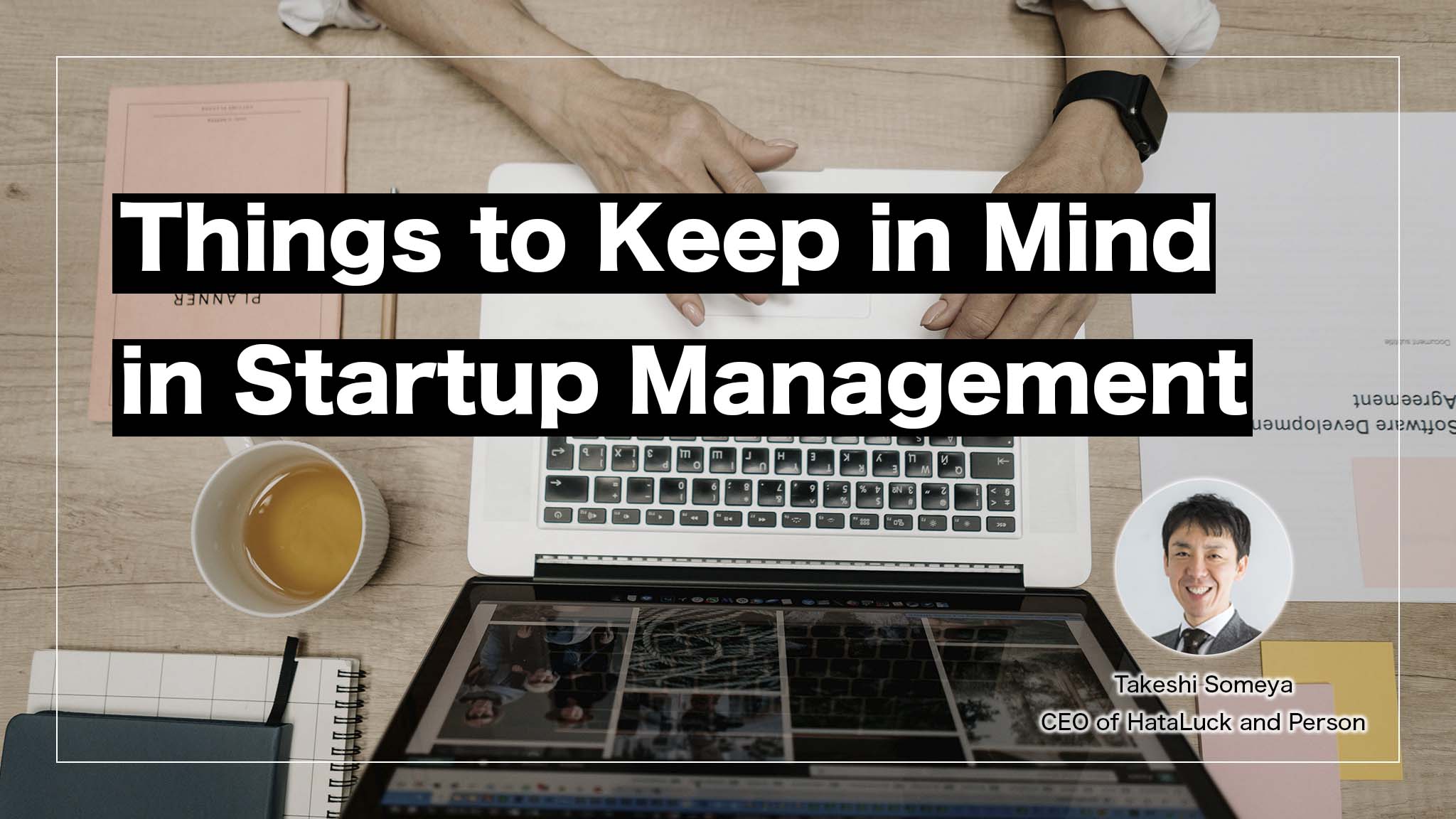
Written by Takeshi Someya and edited by the Universe Editorial Team
Hello, I am Takeshi Someya from HataLuck and Person (HataLuck).
HataLuck is a startup offering a digital transformation tool “Hata-Luck” for retail, food and beverage, and service businesses.
Since around the spring of 2023, Global Brain (GB)’s hands-on support team “Value Up Team (VUT)” has been supporting our company’s sales, product strategy, organization building, and other aspects.
Among the various achievements we have made through their support, one of the biggest is that “all of our members are now able to think like a company owner.”
This resulted in each division making decisions much faster, which has led to higher business management quality.
This article will delve into the VUT and our company’s initiatives and explain how we became a “team with a company owner perspective.”
The following three factors are vital for a team to have a company owner perspective.
- Hold discussions based on a common understanding of business management
- All members aim to achieve the same vision
- Look into various supporting information when considering things
Making the “impact on management” the baseline of discussions
Company owners tend to think “Which area would generate the largest return on investment?”
However, such a way of thinking is merely ingrained in company owners, and almost all the other members have different perspectives. Designers think about customer-friendly designs, and sales representatives consider how they can identify problems faced by customers and close deals.
When a company owner has discussions with the members, he/she should fully understand the above and hold discussions based on a “common understanding” of business management.
It was Kawasaki-san, responsible for system development-related support in VUT, who told me this.
Several years ago, “Hata-Luck” had faced difficulties in system development. Due to the nature of our product being a multi-feature system, many complex codes were involved, which led to unstable quality and stagnant development of new features. To change this situation, we asked for VUT’s Kawasaki-san’s help.
He assessed that “the largest cause of stagnating development is technical debt” and explained the following based on a spreadsheet titled “Development ROI.”
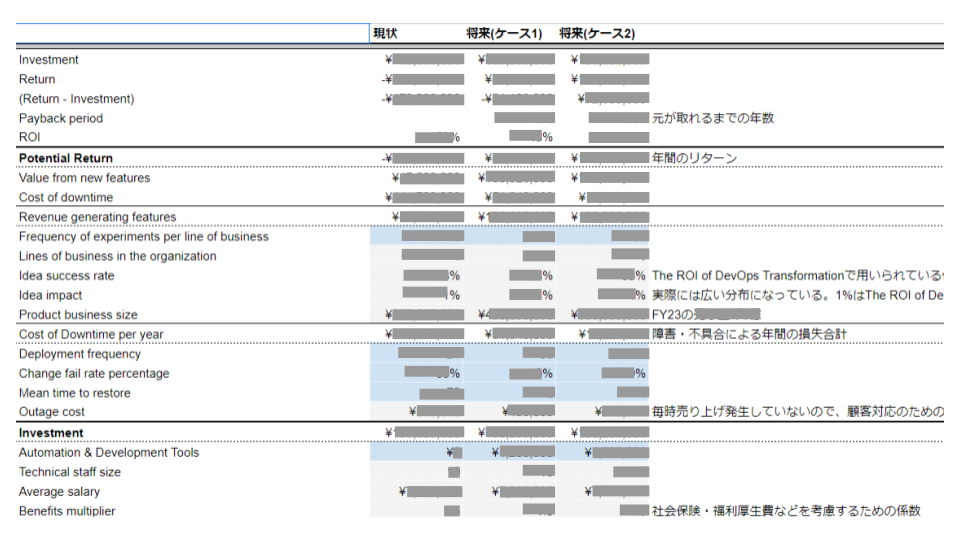
He said, “Engineers used this many man-hours per month to fix a bug caused by technical debt of “Hata-Luck.” If this is converted to a monthly salary, it will be xx yen. So, if you solve the technical debt, you will get back xx yen worth of personnel expenses as net profit. If you convert this to sales figures, you can get 10x the amount as sales, which would be xx yen.”
No other developer had given me such an explanation before.
Kawasaki-san clarified “how much impact solving technical debt would have on management.”
In the past, when I talked about technical debt with the development side members, I heard many opinions based on personal views and feelings such as “we should solve it because we are already overwhelmed with fixing the bugs and we cannot go on like this.”
Obviously, bugs need to be fixed because they hamper customers’ service usage. However, as I am not an engineer, it took time to take action to solve the issue because I could not understand the significance of investing in technical debt which was actually the root cause.
The development ROI concept proposed by Kawasaki-san enables us to make various decisions on development based on numbers.
It was truly meaningful for me to learn this method with our CTO. The CTO and I, a non-engineer, were now able to make decisions together sharing the same view of “considering development based on management.” This was a huge change for me.”
Aiming to achieve the “same six-month goal” with all the team members
If all members of a company do not work toward the same goal, the management speed will slow down due to redundant activities.
Let me refer to baseball, in a Japanese high school baseball team where some members are aiming to win the Koshien national baseball championship and others are aiming to just get through the regional qualifying round, the members will want different practice menus and have different motivation for the games. Leading the team would be impossible.
Although I theoretically understood this, HataLuck actually underwent a similar situation in the past.
While my previous job used the Management by Objectives (MBO) process for goal setting, HataLuck introduced Objectives and Key Results (OKR) from early on. This is because MBO allocates quantitative goals of the business plan to each team, which I thought would not be suitable for the engineering team which has difficulty in setting quantitative goals.
However, it turned out that the business side had set quantitative OKR objectives by breaking down the goals from the business plan. We were applying MBO management while saying it was OKR. HataLuck was managing its goals using a mix of MBO and OKR.
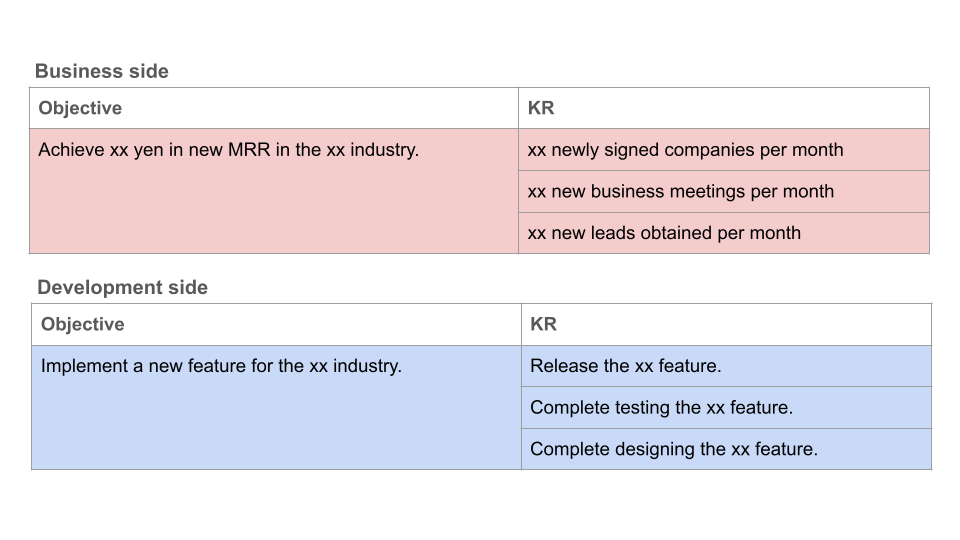
So what happens? When the development side pursues the “state” of “creating a feature for the xx industry” and the business side pursues the “number” such as “achieveing xx yen in sales in the xx industry,” these two different goals cause friction. In addition, while we, as a startup, want to hit a moonshot, setting monthly figures or the number of releases as our goals is too near-sighted and the achievements would be small.
When development was delayed even a little, the business side members were frustrated, saying, “We are spending marketing budgets but there is no product to sell. We cannot achieve our numbers like this.” This made the relationship between the development and business side members worse. Moreover, as the business side members had no idea of the development progress, they were sometimes too late in proposing the product to the customers. I felt that this gap between both sides was impacting our business management.
Seeing the situation was not good, I asked the VUT for their support in reorganizing the OKR. It was Sadakuni-san, GB’s VUT member, who mainly helped us.
Sadakuni-san first interviewed our CxOs and managers and lectured us on “how to effectively use OKR.”
After that, our management members spent a day working out a six-month OKR for the company. We discussed how we want the company to be six months later putting aside numerical targets for the time being.
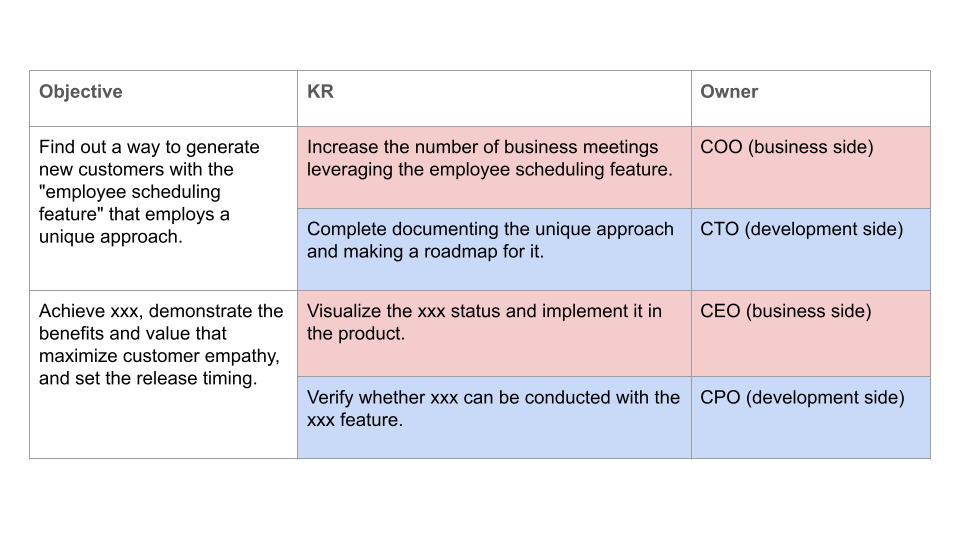
Once you finalize the company’s to-be status in six months, what each division should do will become clear as Key Results (KR). For example, “what kind of features and services should be developed” and “what kind of skills and knowledge Marketing and Sales need to acquire.” Then you move on to setting those KRs as each division’s Objective.
By envisioning our goal in six months and deciding on our actions together with the all the management members each division was now able to act ownership.
For example, suppose some customers ordered our product attracted by our up-coming feature, but now things start to look dicey and we might see a delay in development. In this case, the business side will have those customers wait to sign the formal contract and instead propose a trial order. The development side will reorganize the development structure to complete the development before the formal contract. With such an exchange of actions emerging between the divisions, I no longer had to intervene in every aspect and make decisions, which accelerated the business.
This is “delegation of authority in the true sense.” Just giving numerical targets to CxOs and managers and leaving it up to them to achieve the targets is not right.
Don’t make decisions based solely on “the information in front of you”
To make good decisions, you need to consider your business from every angle. Being shortsighted, obsessed with the numbers at hand, or making business decisions based on only one opinion or viewpoint are all risky.
I became painfully aware of this when the company was examining what kind of feature should be the focus of “Hata-Luck.”
“Hata-Luck” is a service used by people who work in restaurants and retail stores. Before and after the COVID-19 pandemic, we saw a dramatic shift in what customers were looking for in our service.
Prior to the pandemic, there was a strong need for an employee scheduling feature for part-time workers who work in small time slots. However, after the pandemic, restaurants and retail stores were hit by the government’s request to shorten business hours and avoid the so-called “Three Cs” (closed spaces, crowded places, and close-contact settings). They cut the number of part-time employees and had full-time employees run the stores, which meant there was virtually no need for detailed shift adjustments.
This means that the need for an “employee scheduling feature” completely disappeared.
At this point, HataLuck management members were divided on the development policy.
Based on what happened at the time of past pandemics such as the Spanish flu, I anticipated that the COVID-19 pandemic would eventually calm down and believed that we should continue to develop the employee scheduling feature. On the other hand, other management members were thinking that we should stop developing the employee scheduling feature and instead focus on other features.
The management members’ opinion has a point if you look at the causes of lost deals. The customers were saying they do not need the employee scheduling feature, and we did not see any reason why we should focus on this feature.
Although I was somewhat confident in my prediction that COVID-19 would eventually settle down, it was also true that I could not give a convincing explanation to other management members.
Therefore, instead of being overconfident in myself, I wanted to gather peripheral information with a neutral view and hold an offsite meeting with the management members where we get together and deeply consider the future of “Hata-Luck.” At this point, I consulted the VUT.
Sato-san and Chida-san of the VUT collected and analyzed information necessary for the discussions at the offsite meeting. This included analysis of Japanese and overseas data on the part-time job market, interviews with existing customers, and analysis of competitive advantage. After that, they identified about 30 potential features to focus on for “Hata-Luck” in preparation for the discussions.
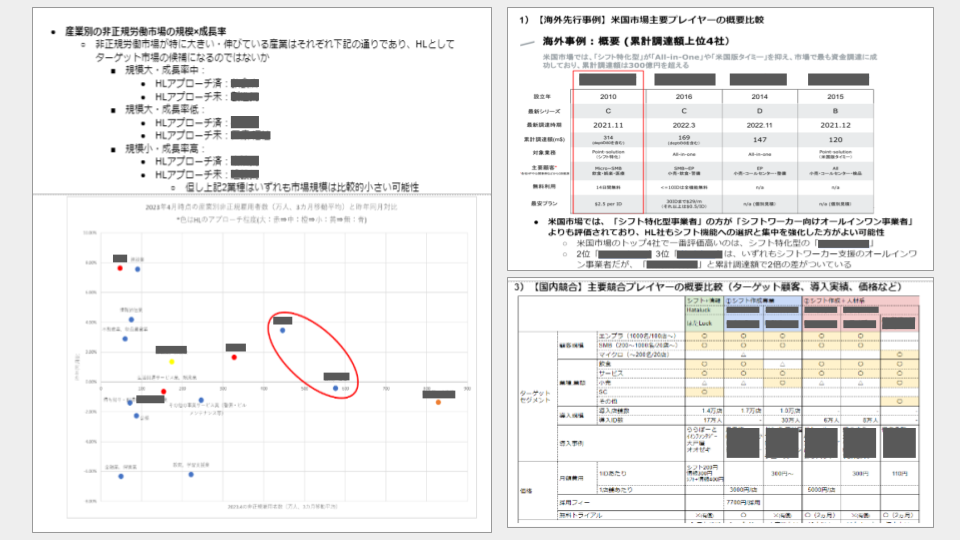
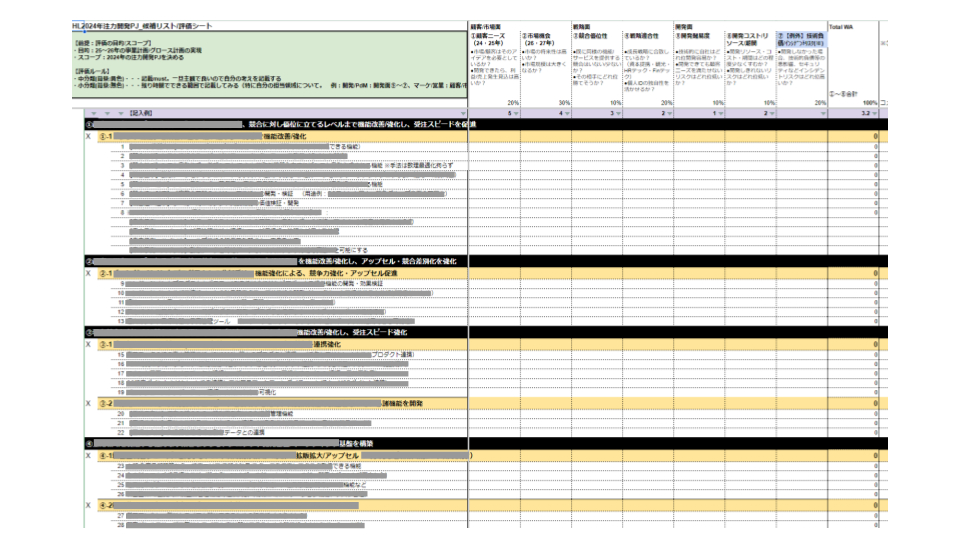
The offsite meeting lasted as long as six hours. After management members and managers held group discussions and evaluated the features based on various data and hypotheses, all of them agreed that the company should focus on the employee scheduling feature.
This shift feature that we kept developing has become our flagship feature today in the post-pandemic world.
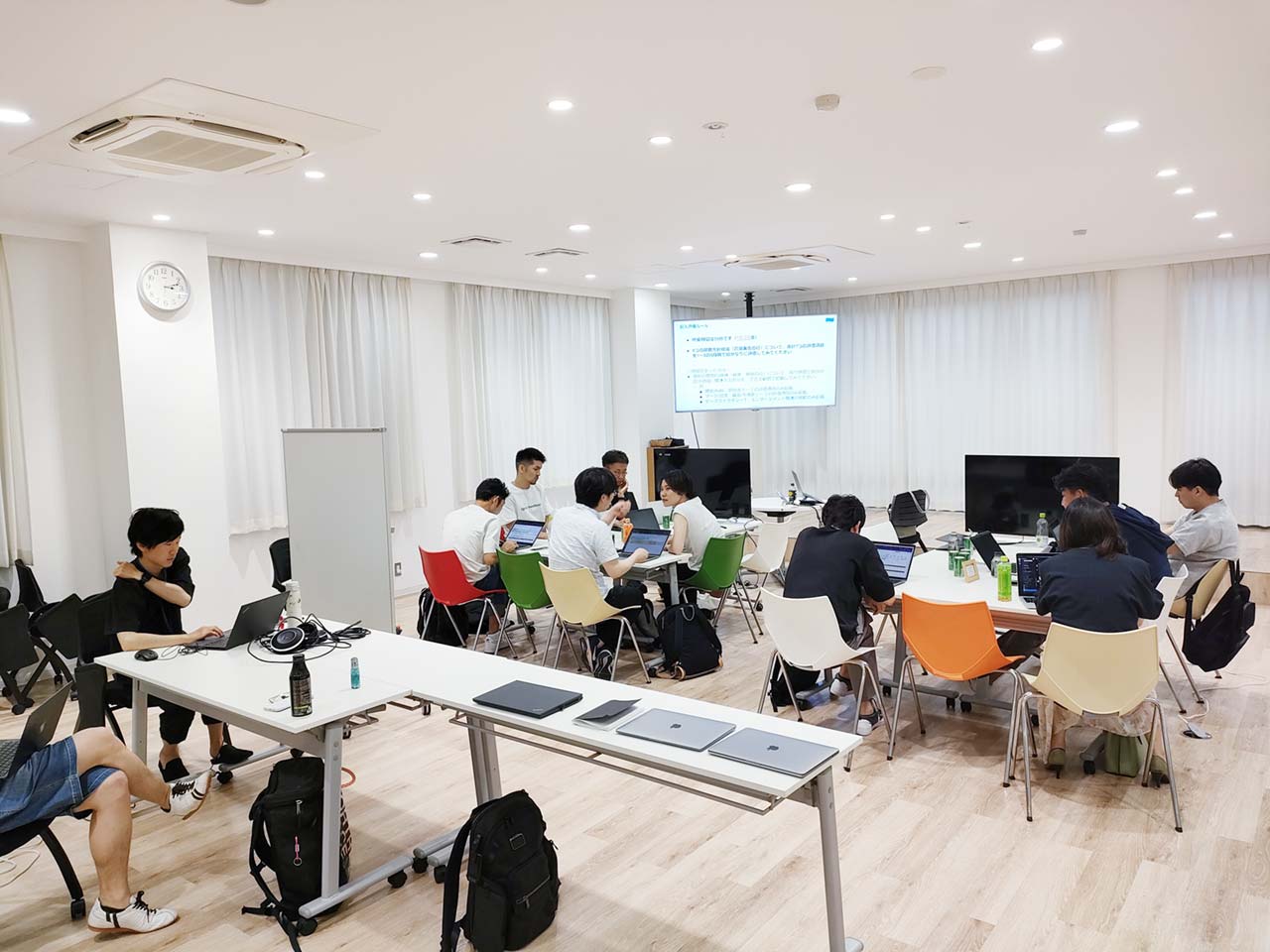
By rights, we need to do by ourselves what Sato-san and Chida-san helped us with. However, it is true that CxOs of startups like us tend to be tied up with the work in front of them. The COO prepares the slide decks by himself/herself and attends customer meetings if large deals are going on, and the CTO works on development activities if the development may largely impact deal closures. It would be best to have a “corporate planning” team, but it is hard to put resources into it.
When we are busy, we tend to be shortsighted or make decisions based only on the information and data available within the company. In order for the entire company to make the best possible business decisions, company owners are required to carefully discuss and make final decisions backed by various analyses. It is vital to examine the situation from multiple supporting sources especially during busy times.
Our decision for good management
I have explained three points so far that I feel are necessary for a company so that it can have a management perspective and make good business decisions.
- Hold discussions based on a common understanding of business management
- All members aim to achieve the same vision
- Look into various supporting information when considering things
None of these should be missing. Even if various data is brought together and analyzed, it is impossible to reach a consensus if the members all have different visions. Conversely, even if the members share the same goal, they would not be able to have a company-owner perspective if they cannot discuss with each other based on a common focus on “investment and return.”
However, to implement all of the above, human resources are inevitable. In particular, the third point cannot be implemented only by the development and sales members on the frontline.
So, HataLuck established a unit called “market research and planning unit” under the CEO’s Office.This team will aim to create a new market while working on measures that cannot be handled by the existing members alone, such as competitive analysis and consideration of new features, which are exactly what the VUT had done.
Thanks to the VUT, we were able to find out that we would get a good return by investing in our future and make this decision to establish a new team.
The VUT is a “Team of Head Coaches” for startups
The VUT worked with us as if they were “HataLuck employees.”
They accompanied us to onsite business meetings to discover customer needs, made development estimates with the Product Manager, and built sales forecasts for the to-be-launched employee scheduling feature. They worked hand in hand with us at HataLuck to the extent that I started wondering “How can they be so supportive?”
Using a baseball example again, the VUT is a “team of head coaches” that supports the HataLuck’s starting lineup for the game.
As a scorekeeper, they made suggestions for the game plans to me, the team manager, and they even gave advice on how to adjust the selling “form” (as in pitching/batting form) if there is a low-performing sales member.
Normally, a VC is only the “spectator” cheering from the stands, but the VUT members “are in the dugout together with us.” They were even ready to play as a “pinch hitter” during the game to contribute to the HataLuck team.
In fact, we awarded the VUT to express our gratitude at our company town hall meeting held at the end of 2023. The awards are usually given to HataLuck members, but we added a new category to award the VUT. Every single HataLuck member supported this.
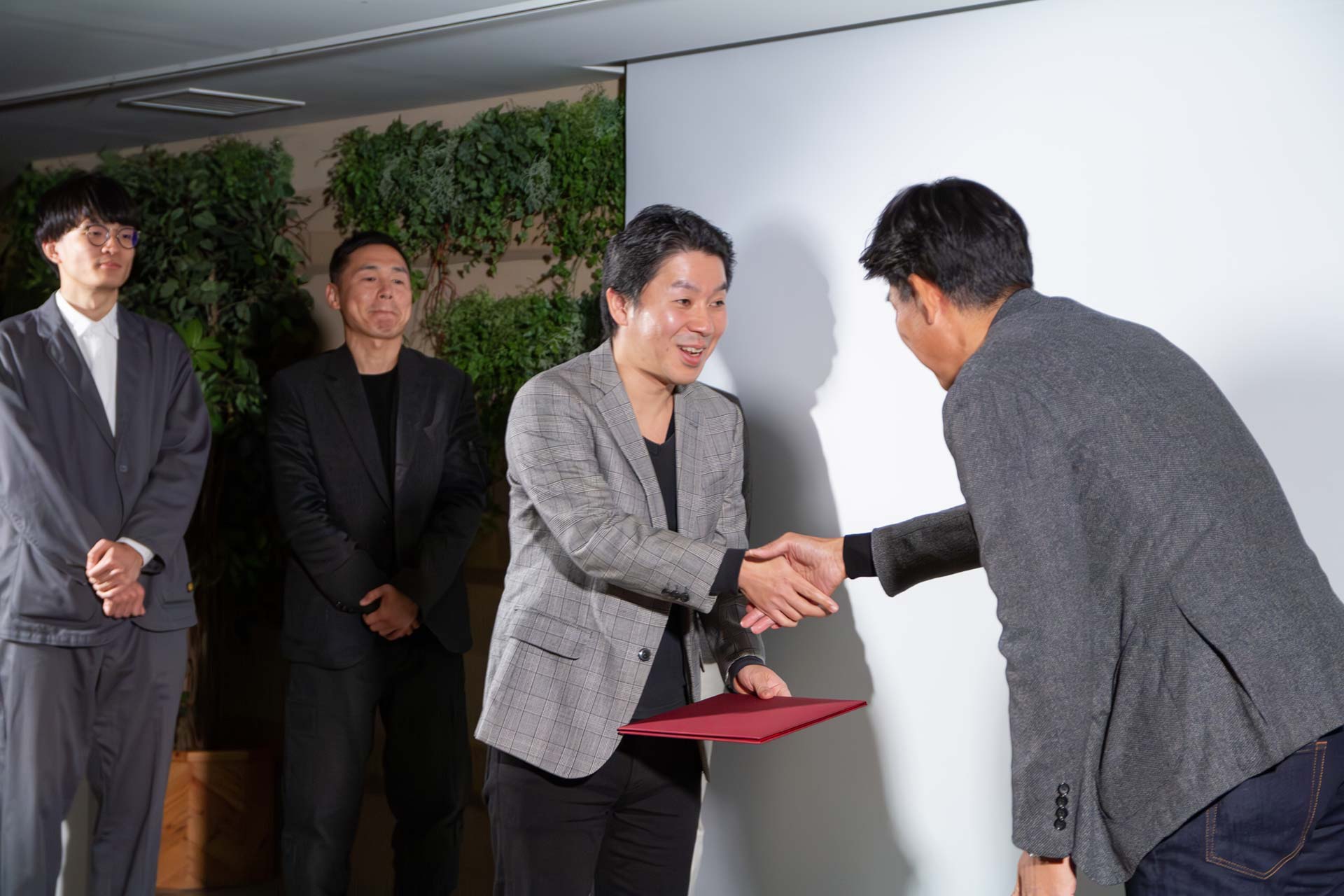
Lastly.
This is only my personal thought. As an entrepreneur, I believe that it is the startups that will recover Japan’s three lost decades.
The VUT is striving to support startups in making a further leap into the future. I truly hope that they will continue to make success in supporting startups like us.
I also hope that this article would be of help to all the startups that are making efforts.

Takeshi Someya
HataLuck and Person Inc.
CEO
Born in Ibaraki Prefecture, Japan in 1976. In 1998, he joined Recruit Group. He was engaged in job ad sales for mid-career and part-time jobs and received the new employee award. Then, he moved to the market research and planning division and worked on development of new web and mobile products. In 2001, he joined Digit Brain, Inc. and worked as deputy editor-in-chief and advertising office manager, focusing on PR consulting for major hotels and estate weddings. In 2003, he joined Link and Motivation Inc. (listed on the First Section of the Tokyo Stock Exchange), where he was responsible for consulting services related to recruitment and organizational reform for the service industry such as major retailers, restaurants, and hotels. In 2012, he was appointed as an executive officer of the company. After working on new business development (launching global businesses and the health and productivity management division), he served as the head of an organizational HR consulting company specializing in the services industry. In 2017, he founded Knowledge Merchants Works Inc. and became the CEO. He provides overall HR consulting services specializing in the service sector focusing on transforming the management and organization of companies with multiple stores.